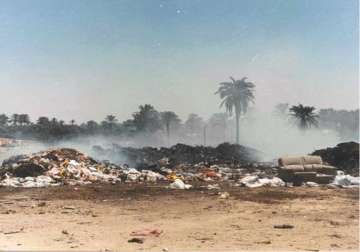New Delhi, July 17: Environmental degradation costs India about Rs.3.75 trillion ($80 billion) annually - equivalent to 5.7 percent of the GDP - with air pollution being a major contributor, a World Bank report released Wednesday said.
The report 'Diagnostic Assessment of Select Environmental Challenges in India' is the first such national level economic assessment of environmental degradation in the country.
It analyses the physical and monetary losses of environmental health and natural resources; the tradeoffs between economic growth and environmental sustainability; and provides a valuation for biodiversity and ecosystem services in India.
"It focuses on particle pollution (PM10) from the burning of fossil fuels, which has serious health consequences amounting up to 3 percent of India's GDP along with losses due to lack of access to clean water supply, sanitation and hygiene and natural resources depletion," the report said.
Of this, the impact of outdoor air pollution accounts for the highest share at 1.7 percent followed by cost of indoor air pollution at 1.3 percent.
The higher costs for outdoor/indoor air pollution are primarily driven by an elevated exposure of the young and productive urban population to particulate matters that results in a substantial rise in cardiopulmonary and chronic obstructive pulmonary disease.
Further, a significant portion of diseases caused by poor water supply, sanitation and hygiene is borne by children under five.
About 23 percent of child mortality in the country could be attributed to environmental degradation, the report says.
"Like in many other countries, the debate over growth versus environment is also active in India. This report suggests there are low-cost options that could significantly bring down environmental damage without compromising long-term growth objectives," said Onno Ruhl, World Bank country director in India.
"The costs of doing this are not only affordable in the long-term but would also be offset by the significant health and productivity benefits," said Ruhl.
"India can make green growth a reality by putting in place strategies to reduce environmental degradation at the minimal cost of 0.02-0.04 percent of average annual GDP growth rate."
According to the report, this will allow India to maintain a high pace of economic growth without jeopardizing future environmental sustainability.
Failure to act now could also constrain long-term productivity and hence India's economic growth prospects, the report says.
"Grownow and clean up later will not be environmentally sustainable for India in the long run," said Muthukumara S. Mani, a senior environmental economist at the World Bank and the lead author of the report.
"We believe that a low-emission, resource-efficient greening of the economy is possible at a very low cost in terms of GDP growth," Mani said.
Latest India News
